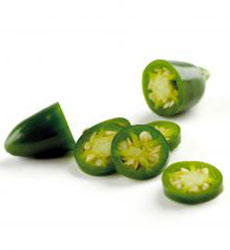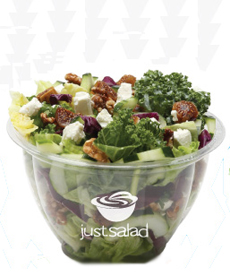|
RECIPE: KALE PESTO DRESSING
Ingredients For 2 Cups
2 cups blanched kale leaves [6 cups raw needed]*
2 loosely packed cups chopped raw kale leaves
2 garlic cloves
1 teaspoon Dijon mustard
Fresh juice from two medium lemons(2 to 3 tablespoons)
1/3 cup stock (chicken or vegetable) or water
1/3 cup grated Grana Padana or Parmiggiano Reggiano cheese
Optional: 1/4 cup slivered almonds or pine nuts, toasted**
1/2 cup extra-virgin olive oil salt and freshly ground black pepper
Preparation
1. COMBINE the blanched and raw kale, garlic, mustard, lemon juice and stock in a food processor; pulse until chopped.
2. ADD the cheese and nuts. Pulse again to combine. With the motor running, drizzle in the olive oil.
3. TASTE the dressing and season with salt and pepper. Add a touch more stock or water if necessary to thin to desired dressing consistency.
*Blanching kale reduces bitterness and softens thick greens. Stir the leaves into boiling salted water for a minute or two, drain, then immediately run under cold water.
**To toast nuts: Heat a nonstick skillet to medium, add nuts and cook over medium heat. Toss nuts/shake the pan often, until nuts are lightly browned and fragrant.
KALE NUTRITION
Kale and its close relative, collards, are winter crops and among the earliest vegetables cultivated by man. Native to the Mediterranean region, they were popular in ancient Egypt and Rome. The Romans and Greeks introduced them throughout Europe.
Early British settlers brought kale and collards to America, probably in the late 1600s. But although they’re delicious, nutritious and low in calories, both vegetables became unfashionable over the past century, finally experiencing a renaissance in recent years.
If you have a home garden they’re easy to grow.
As far as nutrition goes, kale is known as “the queen of greens.” As members of the cruciferous group of vegetables, it has potent anti-carcinogens. One cup of chopped kale contains 33 calories and 9% of the daily value of calcium, 206% of vitamin A, 134% of vitamin C, and 684% of vitamin K. It is also a good source of minerals copper, potassium, iron, manganese, and phosphorus.
Here’s more about kale nutrition and health benefits.
|







